The Roller House is a design that revolves mainly around achieving a sound thermodynamic behavior that creates a comfortable indoor climate for the inhabitant of the quarantine cabin. It refers to natural behaviors of flora and fauna to understand how change in envelope and openings can allow a cabin to behave optimally in different seasons. In the process of adjusting the inhabited space for thermal reasons, the inhabitant enjoys a change of scenery and atmosphere that breaks the monotony of confinement.
_Seasonal Adaptations
Mountain goats have very heavy wool undercoats and hollow hairs that keep air trapped close to the body, keeping the cold and wetness out. Similar to mountain goats, moose also grow a coat with hollow hairs to keep them warm.”
“Deer, Snowshoe hares, weasels, arctic foxes, and ptarmigans all change color as winter approaches. Their fur or feathers change from brown to white, which provides the two major advantages: The new fur or feathers are thicker and act as a better insulator than the brown summer coat…”
“When it is cold outside, you put on more clothes. Your winter coat does not keep out the cold, but rather keeps in the heat. Birds and mammals also rely on insulation to prevent heat loss. The most effective insulation traps air since air is one of the best insulators.”
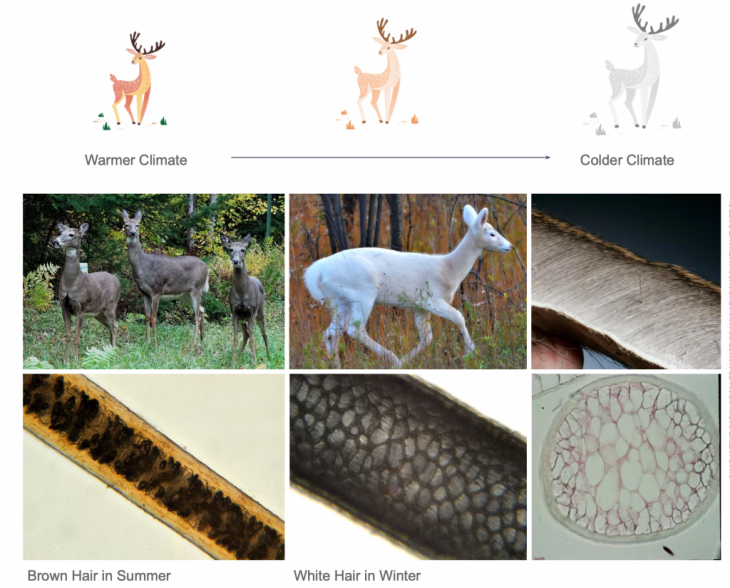
Seasonal adaptation in nature
_Conceptual Strategies
The following are the main conceptual strategies followed for the initial design of the cabin.
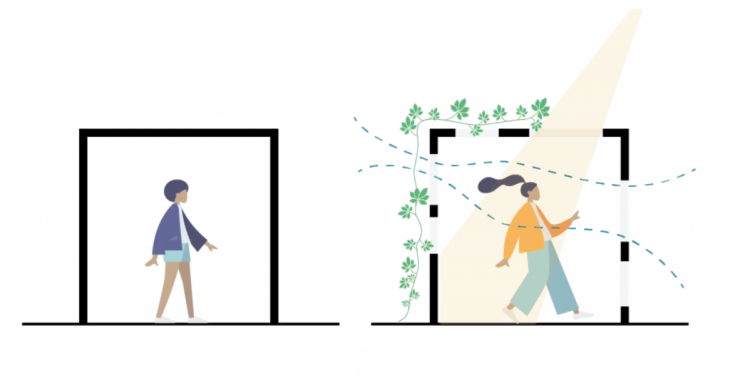
Blurring the Boundaries
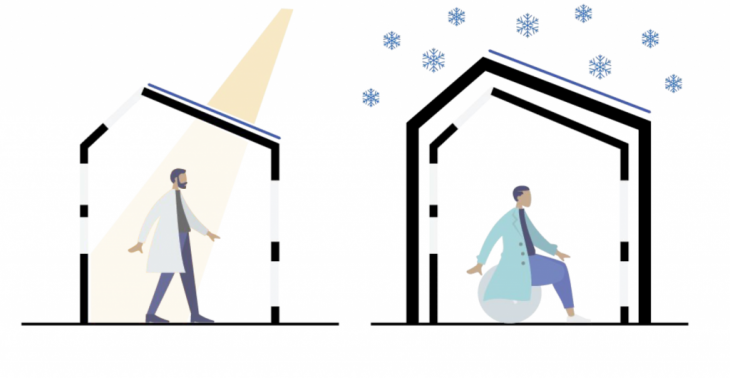
Seasonal Adaptations
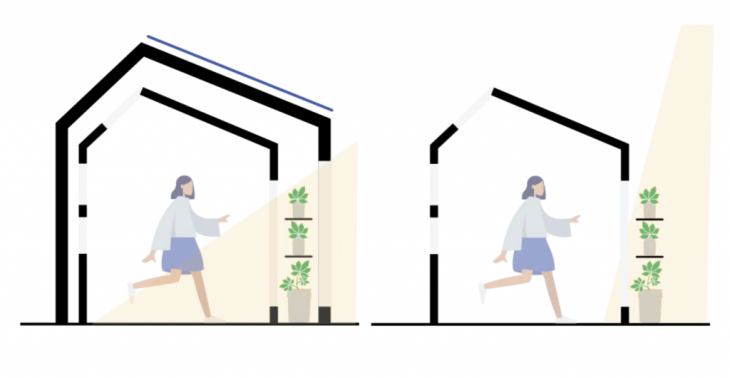
Passive heating and Food production
_Passive Heating and Cooling Strategies

Passive strategies
_Design Process
The process starts with two orthogonal envelopes, each with different materiality and color, that can be arranged in different ways to adapt to different scenarios. In the second instance, the roof is sloped to a 30-degree angle for energy generation and rainwater drainage. Openings in both envelopes are created, which can be operated autonomously, to allow for full ventilation, or to generate a green house effect serving both, heating of the cabin and allowing for food production.
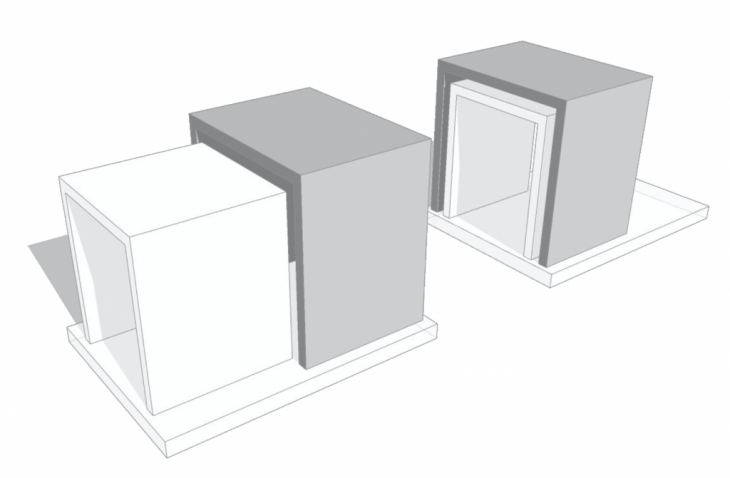

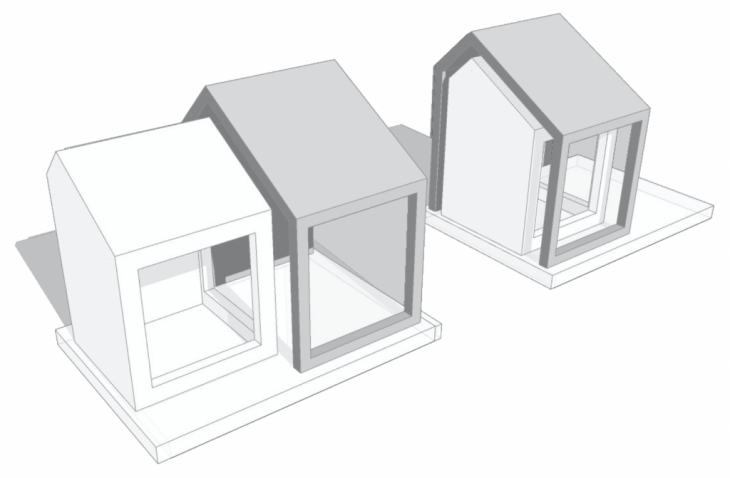
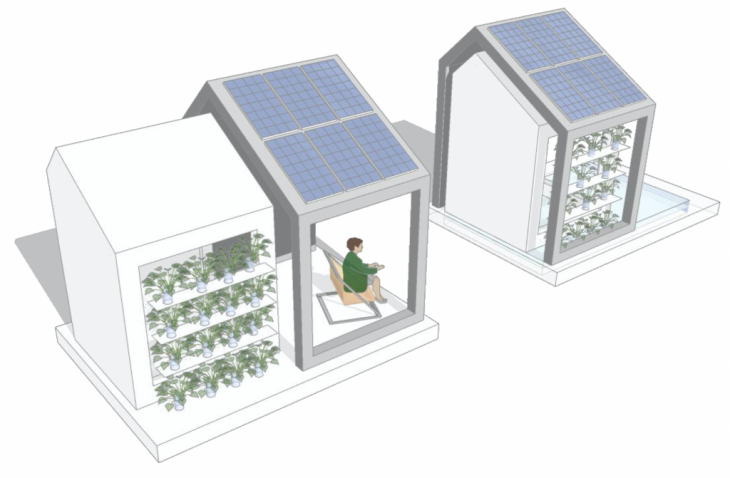
_Materiality
The materiality of the proposal varies depending on the seasonal requirements. The winter darker shell responds to the colder months retaining part of the solar energy during the day and releasing it to the interior during the night. This dark color is achieved by burning the wood using the Shou Sugi Ban Japanese technique. This technique has also been selected for their multiple properties like pest resistant, water resistance, UV resistance, and rot-resistant
The inner summer envelope maintains the natural light color of the pine which helps to reflect direct daylight, avoiding overheating the interior during the summer months. Since this layer is protected during the raining seasons, it doesn’t need as much protection as the winter shell. The shutters facing south are proposed to have a darker color as the winter shell to retain the heat generated by the greenhouse space.
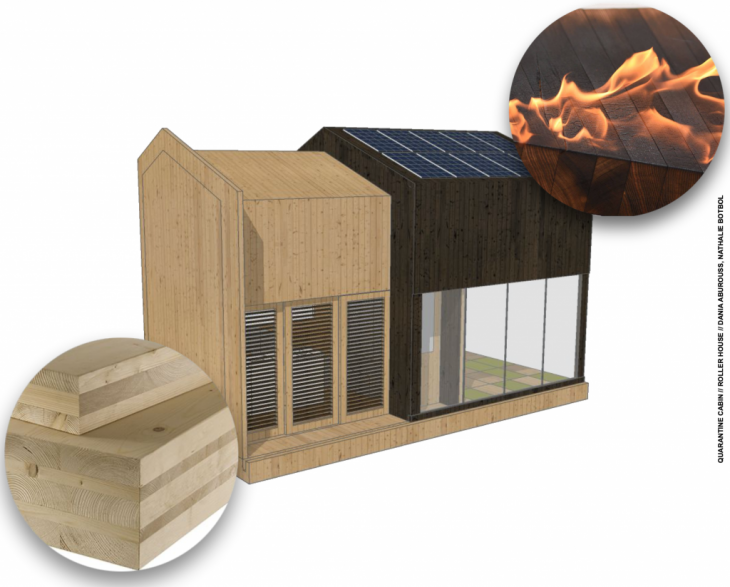
Materiality
_Seasonal Adaptation
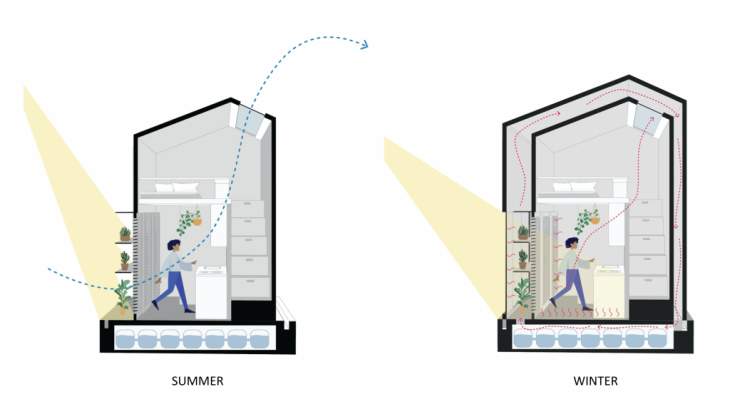
Seasonal Adaptation
_Water Strategy
Regular domestic water consumption = 150 liters per person/ day
Flushing percentage (24%) removed from the total consumption
Total consumption without flushing = 115 liters per person/ day
Total consumption for 14 days per person = 1610 liters
= 1.6 m3
Placing the water tanks in the base of the building provides stability to the static structure. The water can also act as a thermal mass that can store and re-emit heat when needed.
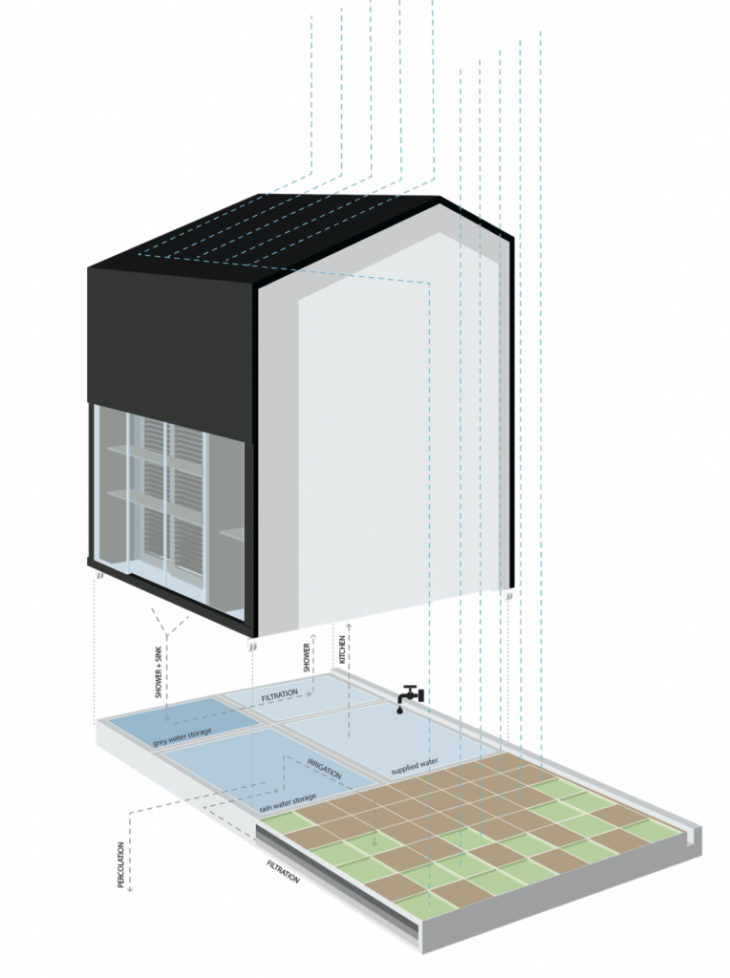
Water strategy
_Shape Adaptation
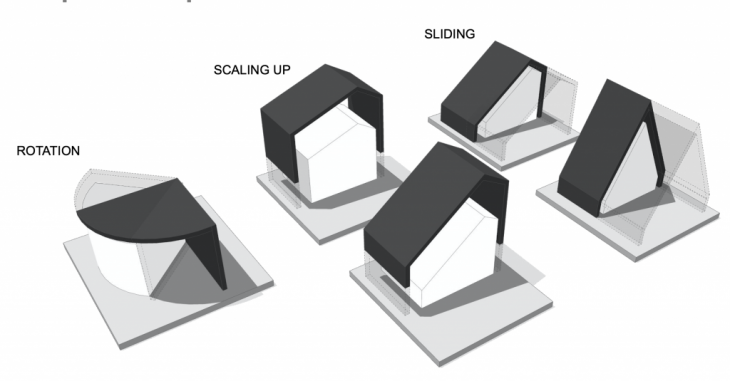
Alternative forms
Roller House is a project of IaaC, Institute for Advanced Architecture of Catalonia
developed at the Master in Advanced Ecological Buildings, in 2019/2020 by:
Students: Dania Aburouss and Nathalie Botbol
Faculty: Vicente Guallart and Daniel Iba?ez